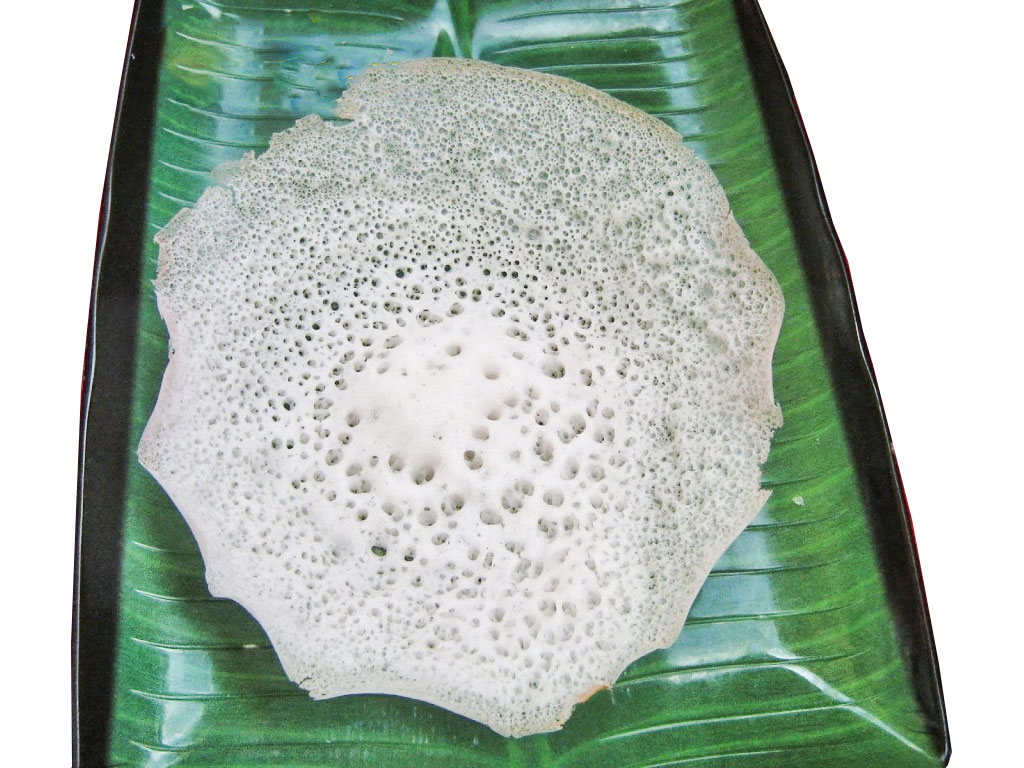Kerala appam. Back home, we make appam or aappam with yeast but few days back, one of my readers asked me how to make appam. I gave him the entire procedure with yeast and he asked me whether he can prepare appam without yeast. It was then I thought of making appam without yeast or baking soda. Here, I have made appam using eno salt. Though I loved the yeast version more, my family loved this eno version also. Appam always tastes best with stew, or mutta roast or with kadala curry.
Ingredients
- raw rice 1 cup
- coconut (scraped) 1/2 cup
- cooked rice 1/4 cup
- sugar 1/2 teaspoon
- eno fruit salt 1 teaspoon
- salt to taste

Method
1. Soak raw rice in water for 4 hours. Drain it and grind it nicely.

2. Take one tablespoon of ground mixture, keep it aside.

3. To the remaining ground rice, add coconut and cooked rice. Grind it nicely to form a smooth batter. Transfer the contents to a bowl and keep it aside.

4. To make kappi: To the rice paste which we have taken out, add 1/4 cup of water, mix well, cook on low heat until the mixture resembles kanji/ rice gruel. This mixture will be bit thick and gelatinous. Keep aside. Let it cool completely.

5. Add kappi to the rest of the ground mixture once cooled. Add required amount of salt. Allow it to ferment overnight.
6. Next day, the batter would have rised nicely. Add sugar, mix well. Add enough water to make the batter pourable.


7. Then add eno fruit salt, mix the batter well. Now you will see the batter bubbling. Keep it aside for 15 – 20 minutes.


8. To make appam: Heat appam chatti. (If you don’t have one, don’t worry, you can use a similar shaped kadai, which has a tight lid, ie you should be able to close the kadai without any gap)
9. Pour 1 ladle batter into appam chatti and swirl it once or twice to coat the sides of kadai with batter. (For lacy edge, swirl once.)


10. Close pan and cook for 3 – 4 minutes.
11. You will see edges leaving the sides of the pan and center is cooked soft. Don’t flip it.
12. Slowly, slide it into a plate.
Note:
1. If you find that appam is sticking to the pan, slightly grease the pan with oil.
2. Keep flame low and cook closed while making appams.















